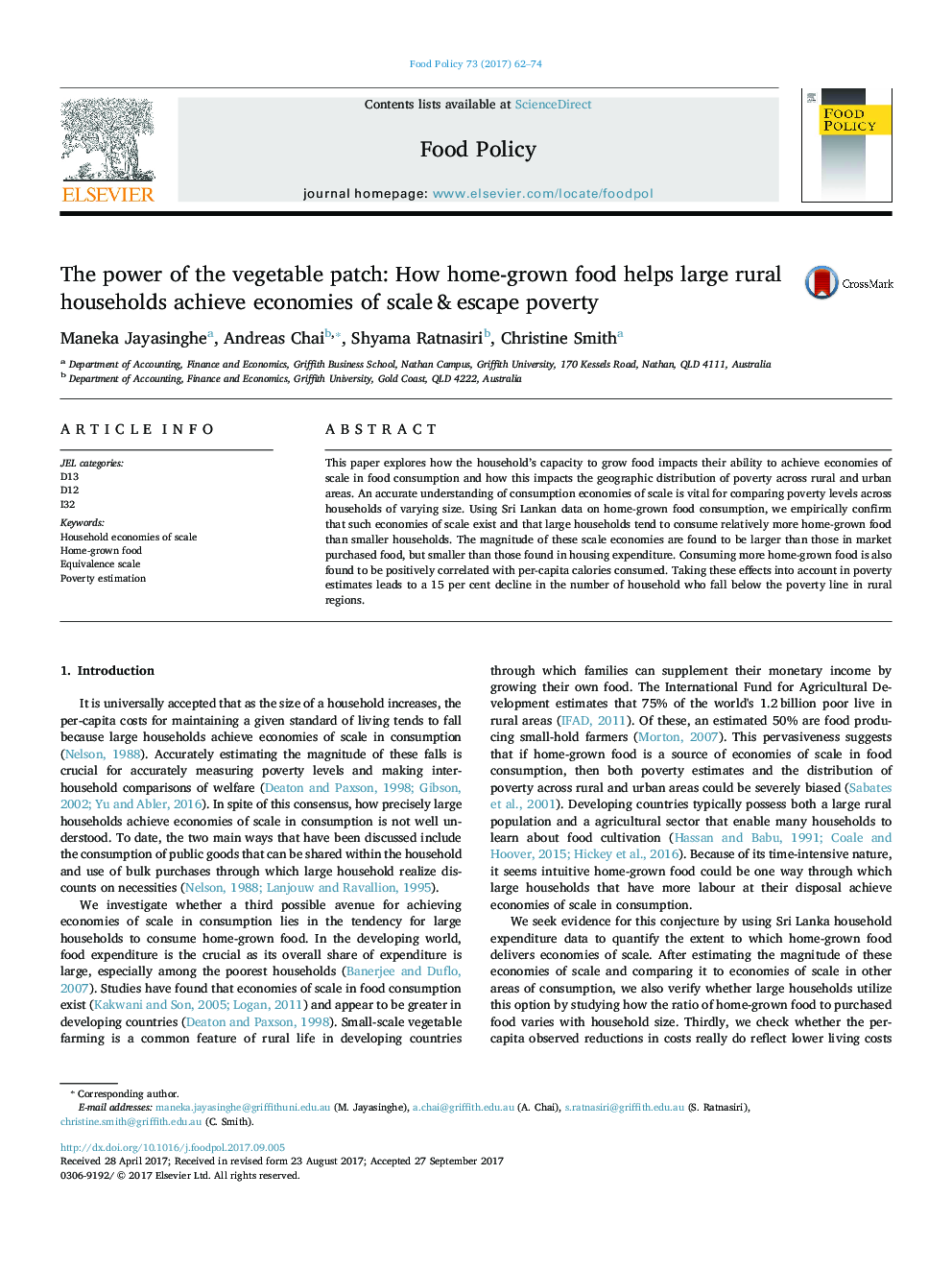| Article ID | Journal | Published Year | Pages | File Type |
|---|---|---|---|---|
| 5070031 | Food Policy | 2017 | 13 Pages |
Abstract
This paper explores how the household's capacity to grow food impacts their ability to achieve economies of scale in food consumption and how this impacts the geographic distribution of poverty across rural and urban areas. An accurate understanding of consumption economies of scale is vital for comparing poverty levels across households of varying size. Using Sri Lankan data on home-grown food consumption, we empirically confirm that such economies of scale exist and that large households tend to consume relatively more home-grown food than smaller households. The magnitude of these scale economies are found to be larger than those in market purchased food, but smaller than those found in housing expenditure. Consuming more home-grown food is also found to be positively correlated with per-capita calories consumed. Taking these effects into account in poverty estimates leads to a 15 per cent decline in the number of household who fall below the poverty line in rural regions.
Keywords
Related Topics
Life Sciences
Agricultural and Biological Sciences
Food Science
Authors
Maneka Jayasinghe, Andreas Chai, Shyama Ratnasiri, Christine Smith,
